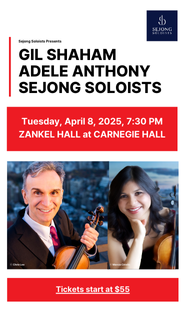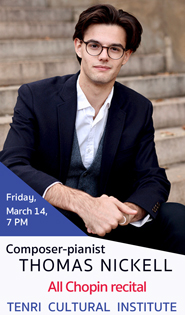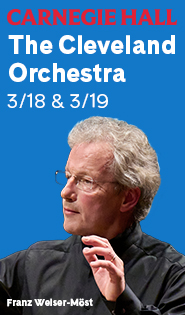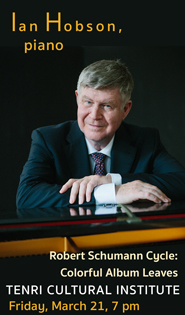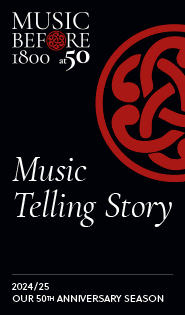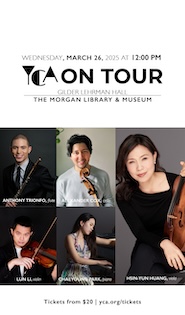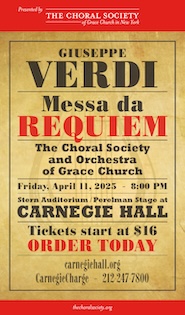Immersive “Blank Out” to kick off season for Park Avenue Armory
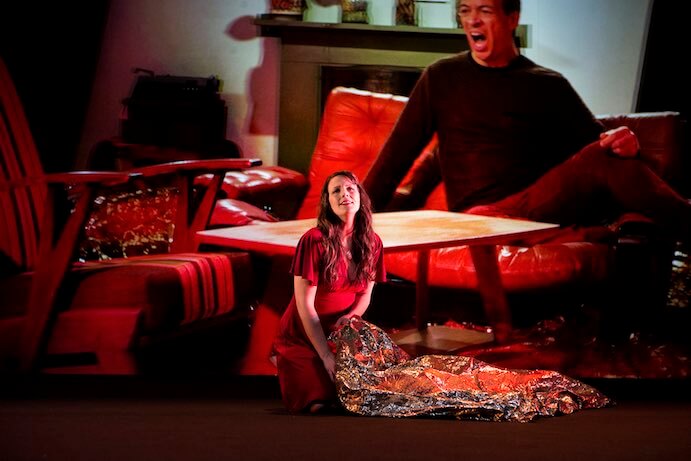
Michel van der Aa’s “Blank Out” opens Thursday night at the Park Avenue Armory. Photo: Minna Hatinen
Filling up an entire block of Park Avenue between 66th and 67th Streets, the Park Avenue Armory is on an unlikely, intriguing journey from literal bastion of New York City high society to one of America’s most prominent redoubts for avant-garde performance and art installation.
The next steps, musically, come up immediately this season, with stagings of some of the most innovative ideas in music drama and contemporary classical composition: Opening tomorrow night and running through Wednesday will be Michel van der Aa’s opera Blank Out. Then following October 6 and 7 will be one of Pierre Boulez’s most ambitious and successful pieces, the dazzling, spatial Répons for large chamber ensemble and soloists.
Blank Out is, in one sense, a traditional music drama. It is a personal, internal narrative based on the life and work of the South African poet Ingrid Jonker. But van der Aa’s means are as cutting edge as can be: the staging around soprano Miah Persson is a 3D film.
That film features the opera’s other main character, both sung by baritone Roderick Williams, with the two singers accompanied by the Netherlands Chamber Choir (also on the film). Persson and the film are integrated in every way; the characters interact and the film has all the accompanying music, very much like a soundtrack but used in an entirely different way and for a different purpose. The audience wears 3D glasses to realize the results.
As van der Aa described the opera during an interview—he asked not to reveal any spoilers—the use of the 3D film is in no way an experiment, or something shiny merely to draw in an audience. It is the dramatic meaning and resolution of the opera that makes the film not only practical but necessary.
“Necessity should come from the libretto, the core idea of the opera,” he stated,” I wanted to use two points of view”—from the soprano and the baritone—”and half way through the whole point of view changes,” from one character to the other.
The combination of drama and technique promises to break free from the Verdian model of operatic narrative, which still dominates even the newest operas on the most contemporary subjects. Non-linear, non-plot-based narratives have been an important feature in more popular modern mediums; literature, graphic novels, and movies (from the art house cinema of Last Year at Marienbad and Nights of Cabiria to entertainment like Momento).
To this background, van der Aa adds a specifically contemporary idea about time; “People binge-watch things now, my friends do it, I do it. It has an influence on how you perceive time and dramatic time.” Blank Out has nowhere near the duration of a multiple-episode series—it takes about 70 minutes—but van der Aa has tried to produce the same sense of deep dramatic immersion wrapped inside the sensation that time has paused at a still point.
The unusual technical means of the opera, with the added dimension to the film, makes it “difficult to explain” in words, the composer said. “We’ve tried to extend the physical space into the film.” Think of the staging as a physical package and the Armory space wrapped around it, rather than the opera being made to fit into the 55,000 square foot Wade Thompson Drill Hall, with its 80-foot ceiling.
The hall will be partitioned to seat an audience of approximately 500 people, and van der Aa says the lighting “will be extended up into the ceiling,” but a large part of the promise of the opera is that the experience will be essentially brand new, even for the most veteran opera/new music audiences.
Musically, van der Aa describes the score as “Kaleidoscopic, from abstraction to direct tunes and chorales.” Instrumentally, the music is electronic with a style and flavor van der Aa thinks connects directly to many listeners’ memories. He characterizes it as a “very warm and poetic analog synthesizer sound,” he was inspired by classic synthesizer music and sounds from the great analog era of the 1970s, and has recreated the timbres and colors of those instruments, which, like the Juno 70 and the Prophet V, had specific and unique characteristics.
Blank Out comes prepackaged with a relationship with Pierre Audi, the Armory’s artistic director since October, 2015. Audi is also the artistic director of the Dutch National Opera, the company (along with the Lucerne Festival Opera and the Teatro dell’Opera di Roma) that produced the work and realized the premiere in March of last year.
At the time, Audi had no plans to bring Blank Out to the Armory. It was later that he and the composer realized the opera would work in the drill hall. He anticipates that the experience will be “quite delicate, very intimate but with a big idea.”
More germane to the possibilities of the space itself will be Répons, another work that Audi is deeply close to. In 1990, he produced a performance of the piece in the Amsterdam Stock Exchange, through the Dutch National Opera. This had the audience in the round, the musicians inside the performing circle. He remembers this as a musical success, but that he also tried to integrate lighting into the performance, with mixed results, he admits; “Boulez fully approved of the idea, but it didn’t work so well.”
In the Armory, with advancements in lighting technology, he expects a completely successful integration. But that would be just enhancement to a performing concept that expands on Audi’s experience at the Stock Exchange and promises to serve the music in greater depth. In the hall, the audience will surround the Ensemble Intercontemporain and conductor Matthias Pintscher, and in turn will be surrounded by the instrumental soloists and the speakers that integrate the instruments and electronics. Each night, the audience will hear one performance, than after a pause will be reseated in different spots and hear another from a new aspect.
Répons was a direct product of Boulez’s work at IRCAM (Institute for Research and Coordination in Acoustics/Music), which Boulez helped build. The Institute is a place for research into acoustics and electronic/acoustic integration, and features a concert hall with paneling that can be moved to adjust the sound properties in the space, even during a performance. Boulez was deeply involved in experimenting with these possibilities, which are manifested in Répons.
As forbidding as Boulez’s image remains, and as ascetic as his research may seem, Répons has a deep relationship with the most important tonal music of the early 20th century. The orchestration—the composer’s penchant for flutes, metal percussion, and piano—and his taste for rapid and cleanly articulated figurations are indebted to both Debussy and Stravinsky, and there are numerous, specific references to Petrushka integrated into the score.
While Audi is eager to hear how this works at the Armory, he generally has “a very relaxed view of the space. I’m not focused on site-specific things or works designed for a big space, but on content, and how that content might work at the Armory.”
Blank Out opens 8 p.m. Thursday and continues through September 27. Répons will be performed October 6 and 7. armorypark.org.

